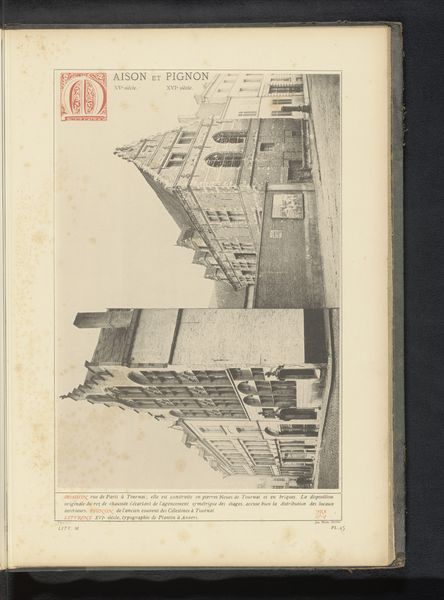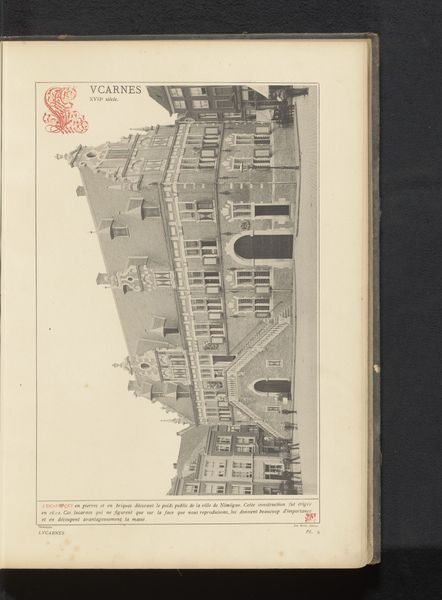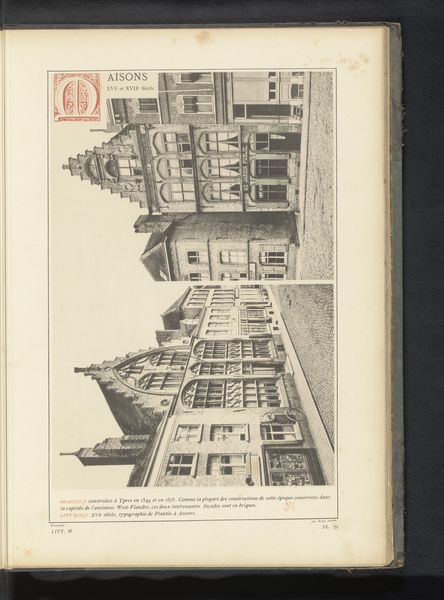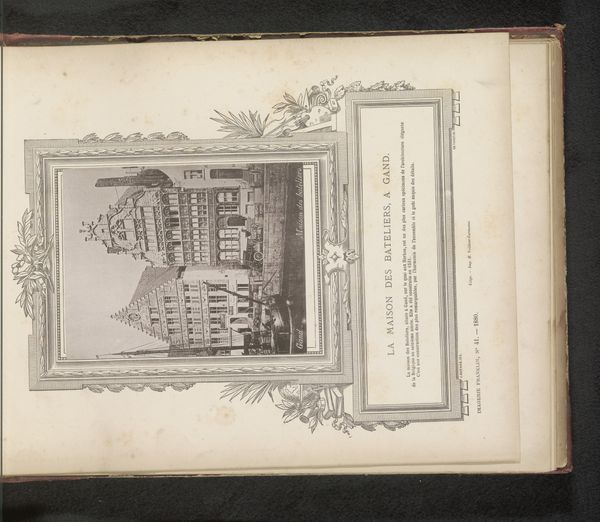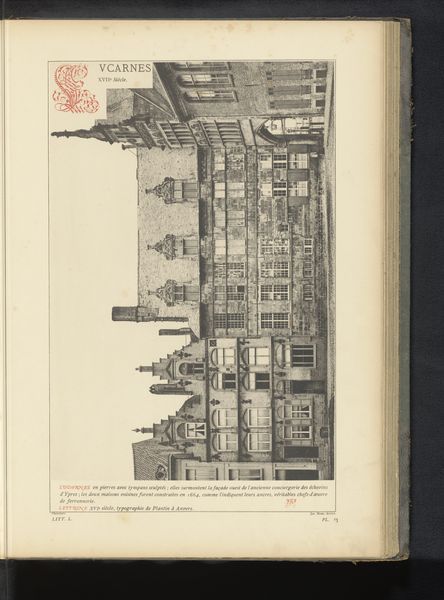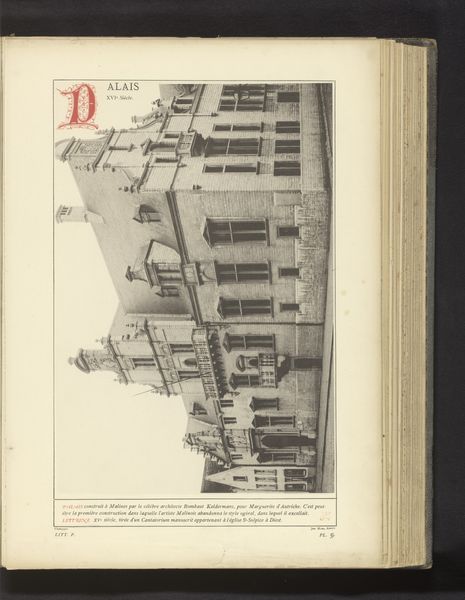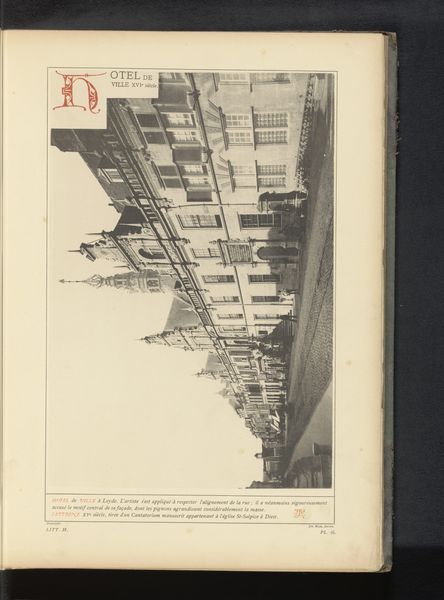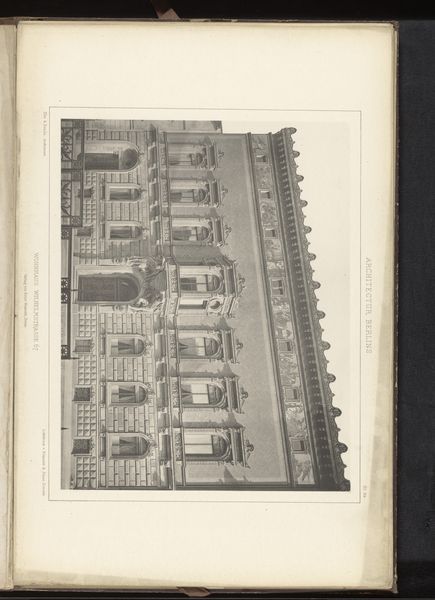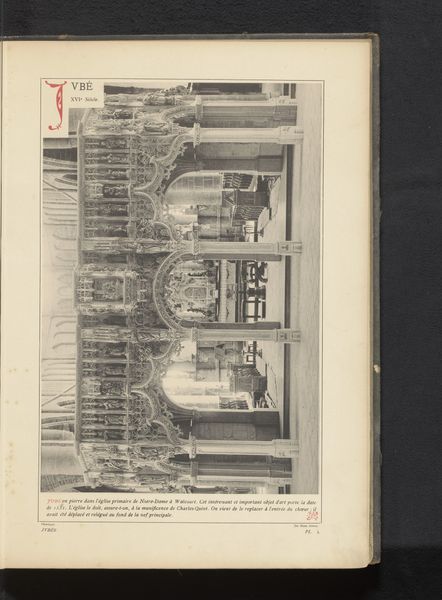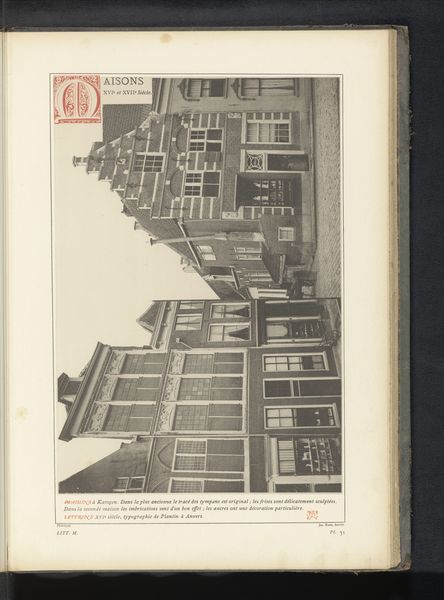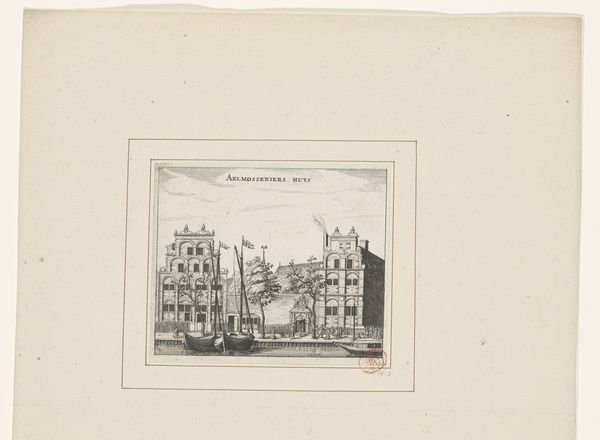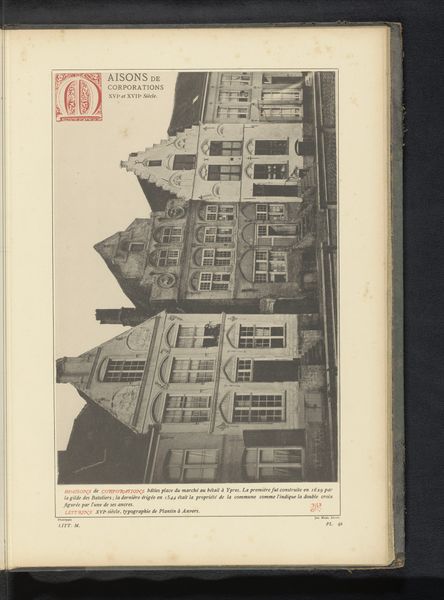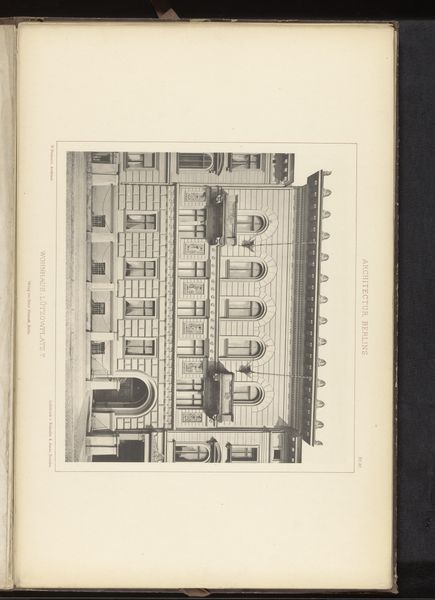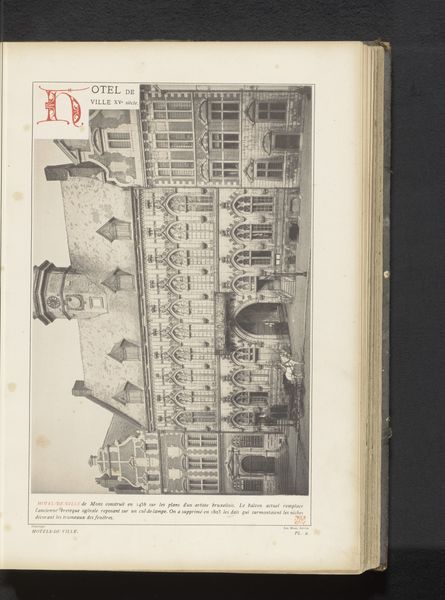
Reproductie van een prent van het stadhuis van Antwerpen dat in 1564 is afgebroken, door Hendrik Causé before 1880
0:00
0:00
print, engraving, architecture
# print
#
cityscape
#
engraving
#
architecture
Dimensions: height 154 mm, width 333 mm
Copyright: Rijks Museum: Open Domain
Editor: This is a reproduction of a print by Hendrik Causé, depicting the Town Hall of Antwerp that was demolished in 1564. It's rendered as an engraving sometime before 1880. I'm struck by the vertical composition, and the almost dreamlike layering of architectural features. What resonates with you when you view this image? Curator: I find the visual stacking particularly evocative. The architectural features aren’t simply documenting a building; they're echoing a visual palimpsest. This print preserves a memory, layered with meanings accumulated over time. What stories does this demolished town hall tell us about the Antwerp of that era? Consider the city's identity bound up in this civic structure. Editor: That’s fascinating, like a symbolic collapse into a single image. It reminds me how cityscapes carry histories within their structures, even ones that are now gone. It almost looks as though the destruction of the building echoes in a sort of visual disarray in its pictorial construction. Curator: Exactly! Notice, too, how even in seeming disarray, there’s a visual language attempting to reconstruct. Look at the symbolism inherent in town halls—seats of power, commerce, and communal identity. Consider its destruction and its recreation in the engraving: What survives? What is intentionally being shown by the artist through careful emphasis and deliberate ordering? Editor: So, in a way, Causé is not just recreating the building, but recreating its memory and the ideas associated with it. It's like visual archaeology! I’m left pondering the layered narratives embedded within this single image. Curator: Indeed, it invites us to become visual archaeologists ourselves, sifting through the symbols of the past. I will definitely think of it in new ways going forward.
Comments
No comments
Be the first to comment and join the conversation on the ultimate creative platform.
